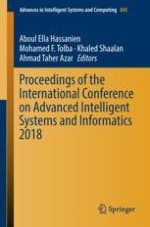This book presents the proceedings of the 4th International Conference on Advanced Intelligent Systems and Informatics 2018 (AISI2018), which took place in Cairo, Egypt from September 1 to 3, 2018. This international and interdisciplinary conference, which highlighted essential research and developments in the field of informatics and intelligent systems, was organized by the Scientific Research Group in Egypt (SRGE). The book is divided into several main sections: Intelligent Systems; Robot Modeling and Control Systems; Intelligent Robotics Systems; Machine Learning Methodology and Applications; Sentiment Analysis and Arabic Text Mining; Swarm Optimizations and Applications; Deep Learning and Cloud Computing; Information Security, Hiding, and Biometric Recognition; and Data Mining, Visualization and E-learning.
